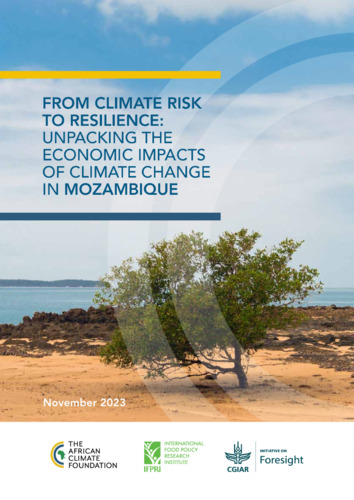From climate risk to resilience: Unpacking the economic impacts of climate change in Mozambique
Abstract
Mozambique is already vulnerable to extreme weather events and climate change is projected to exacerbate their frequency and intensity. The occurrence of cyclones and flooding has increased in recent years and the trend is expected to continue. The country’s coast—where 60 percent of the population, the three biggest cities, and critical infrastructure are situated—is most exposed to climate change-related risks, including damage from cyclones and projected sea level rise. Densely populated and low-lying regions, such as Zambezia, Nampula, Sofala, and Maputo Provinces, are particularly exposed to risks from flooding. More broadly, climate change is projected to increase average temperatures across the country and to result in higher variability in precipitation, especially in the south.
The most critical economic sectors vulnerable to climate change in Mozambique are agriculture,
transport, and potentially energy. In agriculture, maize is likely to be the most affected key crop. This can pose risks to food security (alongside expected higher food inflation because of climate change), given maize’s widespread cultivation and role in nutrition. The impact on other crops is likely to be more limited, and to a large extent driven by damages from increased frequency of extreme weather events. This could exacerbate challenges in the sector, which is already constrained by low productivity and limited arable areas. That said, climate change could create some opportunities; for example, rice yields are projected to improve. Most studies project agricultural production in the central region to be most adversely affected by climate change, albeit the impact varies by crop and within regions. Mozambique’s transport infrastructure is highly vulnerable to climate change due to the projected increase in flooding, the low proportion of paved roads, their limited interconnectivity, and the vulnerability of ports to cyclones and storm surges. Damages to Mozambique’s transport sector are likely to have knock-on effects to other sectors and can have significant regional implications, as the country serves as a conduit for landlocked neighboring countries. Infrastructure damages, alongside the projected coastal erosion, may severely affect the tourism sector. Furthermore, Mozambique’s high dependence on hydropower exposes it to losses from rainfall variability, which is expected to increase. The country’s largest hydropower plant is located downstream on the Zambezi River, which various studies project to dry up due to climate change. Increased water use in upstream countries (such as because of greater irrigation needs and in response to growing populations) could also pose risks to Mozambique’s hydropower sector.

